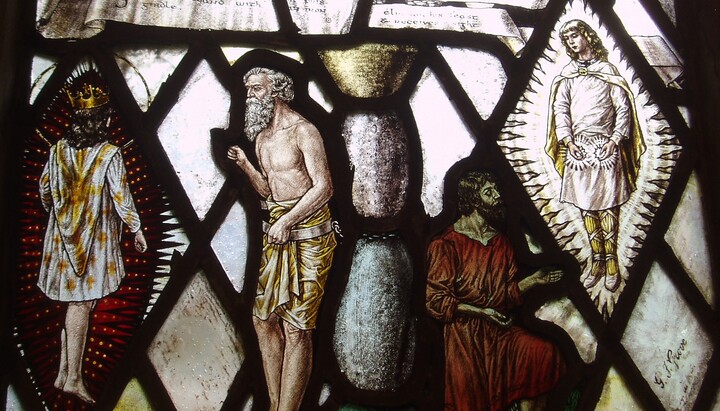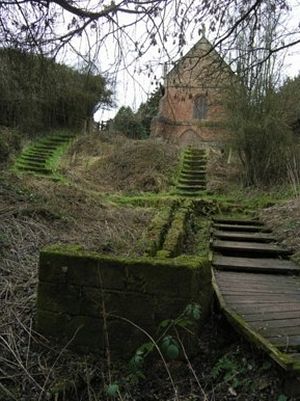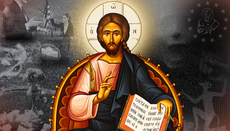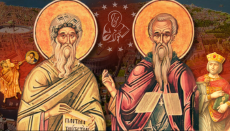A Tree Reaching to Heaven: The Martyrdom of St. Kenelm, Royal Passion-Bearer of Mercia

Murdered by treachery, the holy boy-king of 9th-century England is a witness to the enduring power of innocence, prophecy, and heavenly justice.
Born into the royal house of Mercia, Kenelm was the son of King Cenwulf, a powerful Saxon ruler in early medieval England. Upon Cenwulf’s death in 821, young Kenelm—though still a child—was named king in succession. Due to his age, however, his older sister, Cwendritha, was appointed regent, and her lover Asconbert became the boy's guardian. What followed was a story as tragic as it is miraculous, an icon in narrative form of both betrayal and divine vindication.
Like many saints of the Church, Kenelm was gifted with spiritual insight. One night he dreamt a mysterious vision and shared it with his nurse, Wolwere. “I saw, O dearest mother,” he said, “a tree that reached to the stars standing by my bed, and I stood on the top of it… But as I wondered, some of my people cut down the tree… and I made for myself white wings and flew up to heaven.” The nurse, interpreting it with maternal grief, warned him that this was no ordinary dream. “The falling tree,” she said, “is your life, which will be ended by the treachery of your sister and guardian. The bird flying to heaven is your soul.”
Shortly thereafter, the prophecy was fulfilled. While traveling between the hills of Clent and Romsley, the boy grew tired and fell asleep. Seizing the opportunity, Asconbert began to dig a grave. When Kenelm awoke, he rebuked the murder attempt, proclaiming, “This is not the place ordained for you to kill me.” Then, with the innocence and authority of a child touched by grace, he drove an ash twig into the ground—and it miraculously blossomed. But Asconbert, unmoved by the sign, lured the boy to another place and beheaded him. The flowering tree became the silent tombstone of a murdered saint.
The wicked pair—Asconbert and Cwendritha—spread the story that the king had vanished. Cwendritha seized the throne, silencing any who spoke of her brother’s fate. But no crime is hidden forever. Even before the grave was filled in, a white dove appeared from the base of Kenelm’s skull and flew all the way to Rome. During the Divine Liturgy, the dove descended into the hands of the Pope, dropping a scroll upon the Holy Table. It read:
In Clent, in Cowbach, lieth under a thorn,
His head off-shorn, Kenelm, king-born.
The Pope, recognizing the miraculous nature of the message, sent word to Archbishop Wulfred to search out the place. Guided by the riddle, and helped by signs from nature—a radiant light and the lowing of a white cow—the search party found the grave, where they unearthed the boy’s body with the dagger still beside it. Immediately, the church bells throughout the region began to ring of their own accord, and a spring of water gushed up at the spot—a holy well, remembered for many miracles.

When the body was taken in procession to Winchcombe, Kenelm’s former capital, the townspeople came out weeping to meet their martyred sovereign. Cwendritha, realizing her crime was being exposed, rushed to the abbey and in desperation tried to halt the procession by reciting Psalm 108 backwards—a dark art known among occultists of the time.
But the Lord would not be mocked: at the very moment the holy body came into view, her eyes fell out of their sockets, splattering her psalter with blood. Her death followed soon after, and her body was left unburied, devoured by wild beasts—an image of the desolation that follows unrepented sin.
Kenelm’s relics were enshrined beside his father at the east end of the abbey church, and the site became one of the most beloved pilgrimage destinations in England. Miracles multiplied, and even centuries later in 1815, when the tombs were uncovered, the remains of a child and a dagger were found—corroded by time, but not forgotten. The coffins, though empty now, are still visible at Winchcombe Abbey, silent witnesses to the tale of a saint whose life was cut short, but whose memory was raised up like the flowering ash tree.
In the Orthodox tradition, we recognize the saints as icons of the Kingdom—reflections of divine grace in every land and every age. St. Kenelm reminds us that holiness is not the privilege of the strong or the learned, but the inheritance of the pure in heart. Though he wore a crown on earth, he gained a greater crown in heaven. Though murdered in silence, he was vindicated by God in glory.
May his life and death give us each strength to bear our crosses with childlike faith, until we, like him, ascend the tree that reaches to the stars. Holy Royal Passion Bearer Kenelm, pray to God for us.
The Holy Orthodox Church commemorates the Holy King-Martyr Kenelm of Mercia on July 17/30.
More details on his life can be found in The Saints of Anglo-Saxon England, Vol. I, by Vladimir Moss. See also Studies in Worchestershire History, by John Humphreys.









